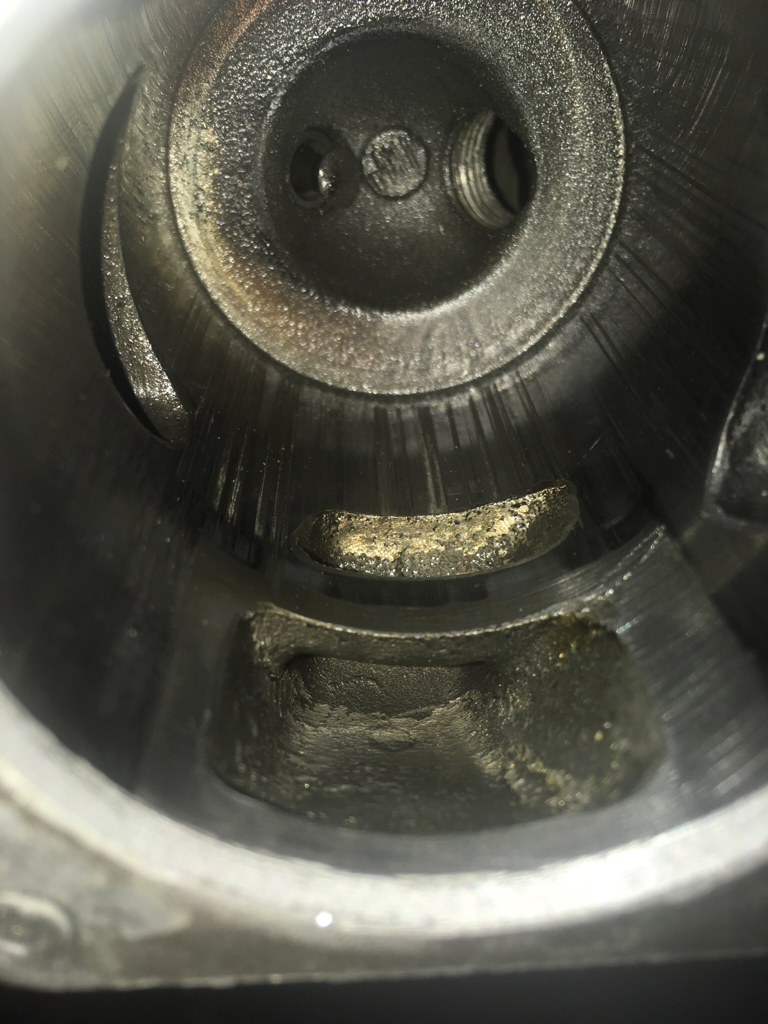AgTech4020
ArboristSite Operative
I recently traded a nice MS250 for a non running but complete 036 Pro. The saw had lots of compression and new (aftermarket) plastic but had a good STIHL 20” bar and chain. Upon getting home I found the impulse line bad. I installed a new impulse line and the saw started and stayed running on the third pull. It had real snappy throttle response and idled smoothly laying on all sides. I sharpened the chain and cut with it for about three tanks of fuel. It ran good but didn’t lug like my MS360. I brought it back to the shop and did a compression check the next day, 175 psi in two pulls cold. I looked at the cylinder through the plug hole and was shocked at how badly the cylinder was scored. I could see where it was gouged through the plating in several spots. I removed the cylinder to find it was badly scored all the way around. I have no idea how it could make 175 psi compression. The cylinder is a very obvious low end aftermarket. A closer inspection led me to find that the crankshaft is offset towards the pto side. The crank is shifted far enough that the counterbalance has been rubbing the paint off the crankcase.
Has anyone successfully tapped a crank back to center without damaging the crank? I’ve got a new Hyway cylinder I could polish the ports and throw on it but the crank has me nervous. Both bearings appear to be metal caged and look fine. I do suspect the crank is also aftermarket but is tight and looks fine.
Thoughts?
Has anyone successfully tapped a crank back to center without damaging the crank? I’ve got a new Hyway cylinder I could polish the ports and throw on it but the crank has me nervous. Both bearings appear to be metal caged and look fine. I do suspect the crank is also aftermarket but is tight and looks fine.
Thoughts?





